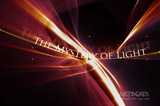As we mentioned earlier, we're in the process of recording our book After Effects Apprentice as a series of training videos, where you get to look over our shoulders and hear what we're thinking as we work through each lesson. Our latest installment is the lesson on Type and Music.
One of the cornerstones of motion graphics is creating and animating type. In this course, Trish will show you how to typeset titles professionally and create your own custom animations, as well as apply and modify the hundreds of text animation presets that After Effects ships with. Additionally, Chris will show you how to add audio to your projects, including spotting “hit points” to align your keyframes and video action.
After Effects has a very powerful text animation engine. The dark side of this power is that text animation in After Effects can be (to put it politely) difficult to master just by poking around. As a result, many artists only apply text animation presets, and have not yet learned how to modify these presets or create their own custom animations, settling for what Adobe provides.
Well, it's time to change that. In the latest installment of the After Effects Apprentice series, Trish reveals the secret of mastering text animation in After Effects: understanding the concept of the Range Selector. Once you master that, you will learn that most type animations are simply a combination of offsetting the properties such as scale, color, or opacity of already-set type, and then selecting (and animating) which characters get offset and by how much. Along the way, Trish teaches the two core type animation recipes (“typing on” and “cascading”), as well as how to refine, randomize, and customize these movements. She also shows how to place characters in 3D space, animate type along a path, work with Photoshop type in After Effects, and cycle lists of words. And yes, she covers text animation presets as well – including a good workflow for choosing candidates to present to a client, as well as improving them beyond their defaults.
Beyond text animation, Trish uses her background in print to demonstrate professional typesetting techniques many video people may be unaware of – ignore them at your own risk, as knowing them can be the difference between a sophisticated and amateurish looking job. Her partner Chris makes an appearance, talking about adding audio to your After Effects projects and how to time your animations to music. Chris also touches on subjects such as licensing concerns and how to best mix audio inside After Effects. These two sections will be of use to editors and animators of all stripes regardless of what software you actually use. And for After Effects users, throughout this course both Trish and Chris share numerous workflow tips and creative ideas you can put to use the next time you need to incorporate type or music in your work. This is our most extensive installment in the After Effects Apprentice series so far; we hope you enjoy it!
The content contained in After Effects Apprentice – as well as the CMG Blogs and CMG Keyframes posts on ProVideoCoalition – are copyright Crish Design, except where otherwise attributed.

